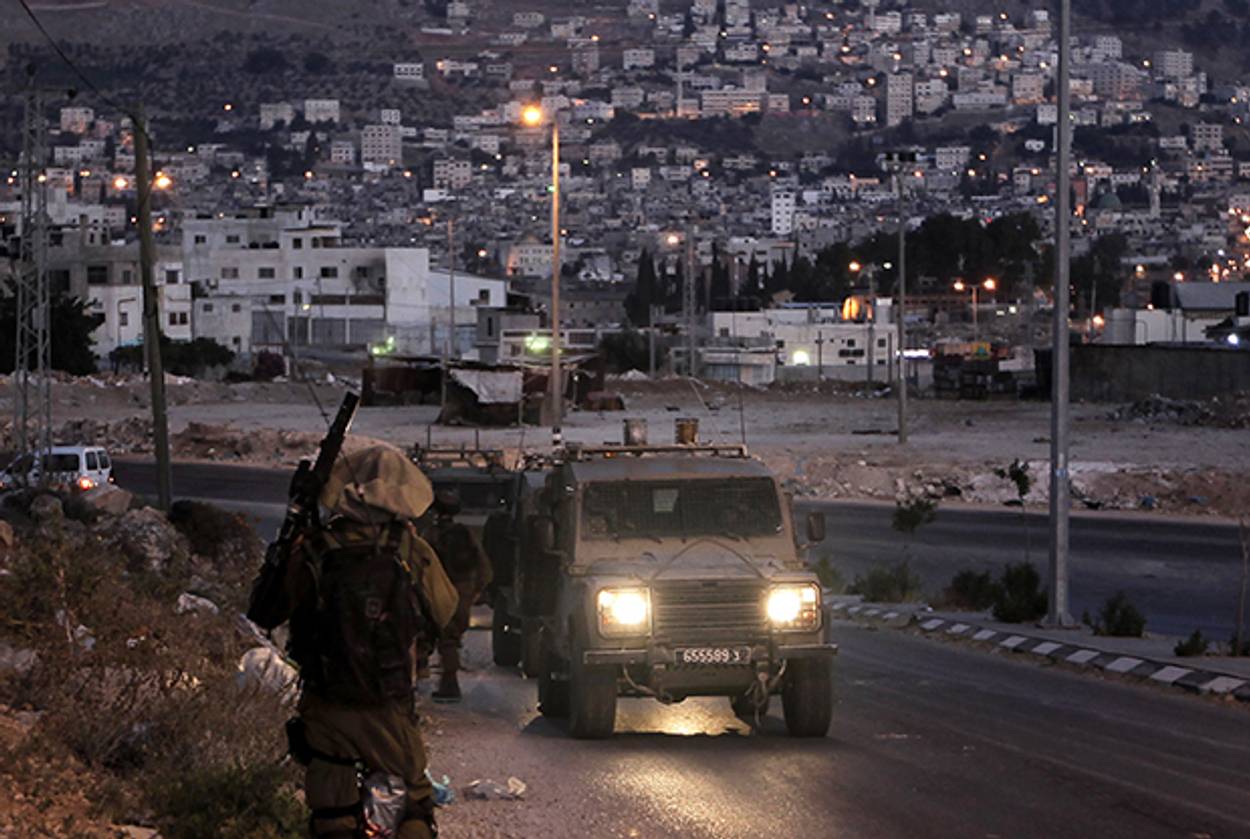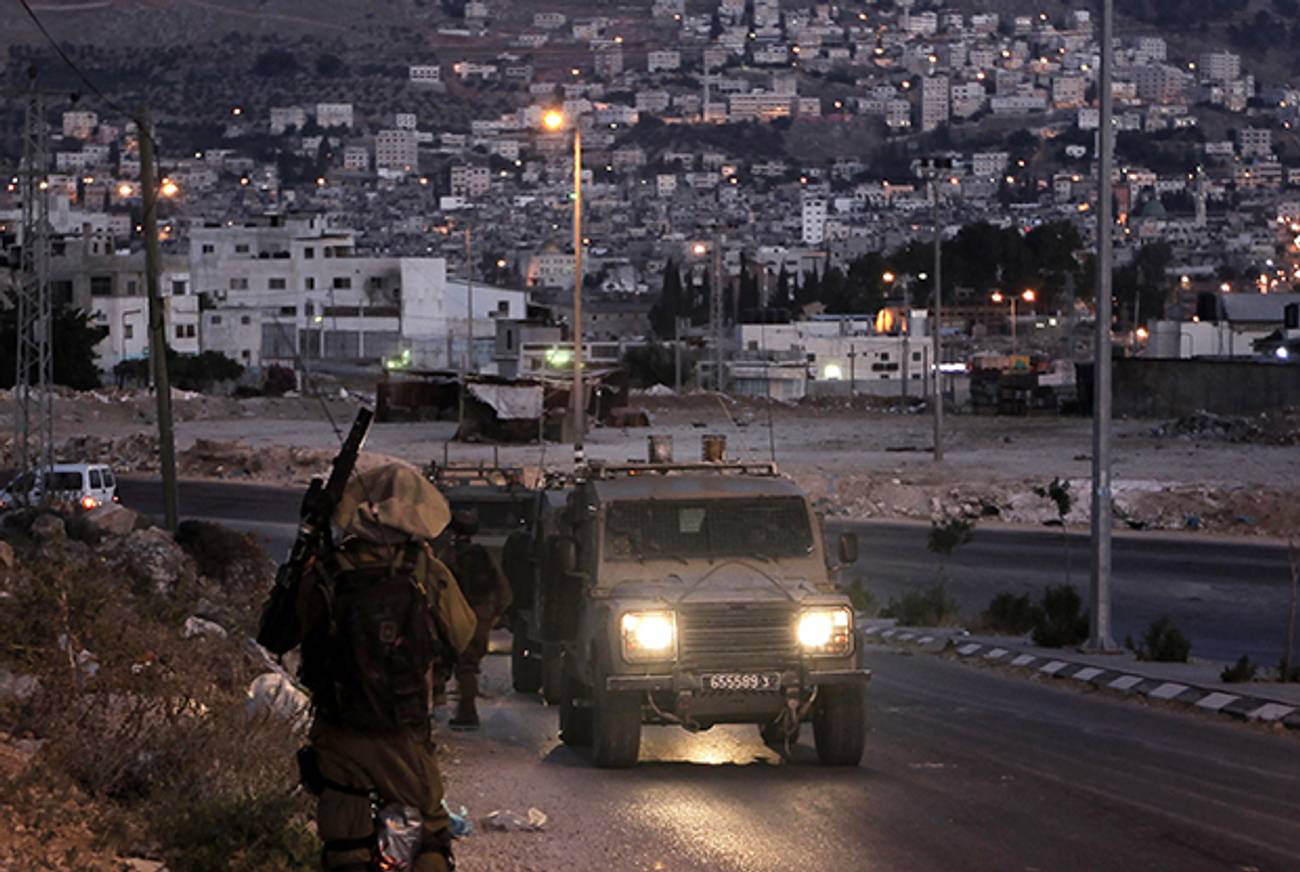New York Times Reporter Wonders Whether Hamas Kidnapped Those Three Teenagers
How much more evidence do we really need?




The question of who did or did not order the kidnapping and murder of three Israeli teenagers this summer has become one of the more contentious issues of the recent round of violence between Israel and Hamas in Gaza. From the beginning, Israel blamed Hamas, and began arresting Hamas operatives in the West Bank—where they told Mahmoud Abbas that his rival was planning a coup. Hamas responded by raining dozens of rockets per day on the South of Israel. Israel responded with air strikes on Gaza. You know the rest of the grim story. The kidnapping and murder of the three teenagers was the match that lit the fire. But who lit the match?
Because this was not one of those terrorist acts whose authors claimed immediate and proud responsibility, its origin won’t ever have the absolute, perfect clarity that such admissions, in their twisted way, provide. Nevertheless, a clear preponderance of the evidence that has emerged since—including statements by the terrorists and their controllers—supports the Israeli government’s assigning of responsibility to Hamas. Anyone interested in the opposite view would do well to read Isabel Kershner’s piece in The New York Times last Friday. It appears to be a good-faith effort to make sense of recently released court documents, but I think that her conclusions are simply not warranted. Let me explain why.
A casual reader of Kershner’s piece would think that she has shown the Israelis to be liars. Reviewing court documents related to the investigation of the Palestinian suspected of spearheading the kidnapping and killing, Kershner claims that they “provide no evidence that the top leaders of Hamas directed or had prior knowledge of the plot to abduct the three Israeli youths.” This flat claim appears in the story’s second paragraph, and is repeated in various iterations throughout the piece, unmistakably framing it as a story that calls the official Israeli narrative into question.
Because the records are now public—Kershner’s own piece links to a copy—it’s easy to take a gander and see precisely what they say, and, just as important, what Kershner does and doesn’t report by way of context. Here is what we know for certain:
According to the indictment, Hussam Qawasmeh, a resident of Hebron, is the man Israeli authorities believe is behind the operation. He is also believed to be a Hamas operative, a fact that Kershner does not mention. Qawasmeh, the records reveal, contacted his brother, Mahmoud, whom Kershner herself identifies as “a Hamas associate and former prisoner of Israel who is confined to Gaza and who works for an association, Al-Nour, that the documents say belongs to Hamas.” The records then go on to specify that Mahmoud facilitated the transfer of three payments, each for approximately $20,000, to his brother, funds that were used to purchase a stolen vehicle with Israeli license plates, as well as weapons and ammunition.
And so, we’ve evidence of an uncontested Hamas operative—himself released from Israeli prison as part of the deal that set free 1,027 terrorists in return for IDF solider Gilad Shalit, held by Hamas—who is an employee of a known Hamas front, funneling large sums of cash to his brother for the explicit purpose of a military operation. To anyone familiar with the ways terrorist organizations work, this is as close as one could get to cementing a clear and incontrovertible connection between the kidnapping and Hamas. To Kershner, however, this presents “a more nuanced picture.”
Naturally, then, the only thing that would de-nuance this picture would be a full-throated admission from a senior Hamas operative. Luckily, we’ve just such an admission from Saleh al-Arouri, a founder of Hamas’s military wing and a high-ranking official in the organization. Speaking in an Islamic conference in Turkey last month, he said, “There was much speculation about this operation; some said it was a conspiracy… The popular will was exercised throughout our occupied land, and culminated in the heroic operation by the Qassam Brigades in imprisoning the three settlers in Hebron.” Yet Kershner presents only a clipped version of this quote, omitting the bit about the speculation, which makes it all the more clear that the al-Arouri’s admission was meant to provide clarity and claim responsibility for the attack.
Those who doubt the obvious conclusion seem to have no plausible alternative theory. Think about it for a minute: The Israeli government kidnapped and murdered the boys? Mahmoud Abbas did it? Or maybe Netanyahu just wanted a war, and he knew that blaming Hamas in the West Bank would get Hamas in Gaza so uncontrollably angry that they would shoot hundreds of rockets into Southern Israel and refuse to stop, despite appeals from the U.S., the U.N., and Arab countries, allowing him to conduct air strikes, which would also fail to stop the rockets, paving the way for a ground invasion, to destroy Hamas’s tunnel network? It all makes very little sense. As most fact-based observers of this question, including both Hamas’s leadership and the Israeli government, now seem to agree, the most obvious explanation is also the one that’s correct.
Liel Leibovitz is editor-at-large for Tablet Magazine and a host of its weekly culture podcast Unorthodox and daily Talmud podcast Take One. He is the editor of Zionism: The Tablet Guide.